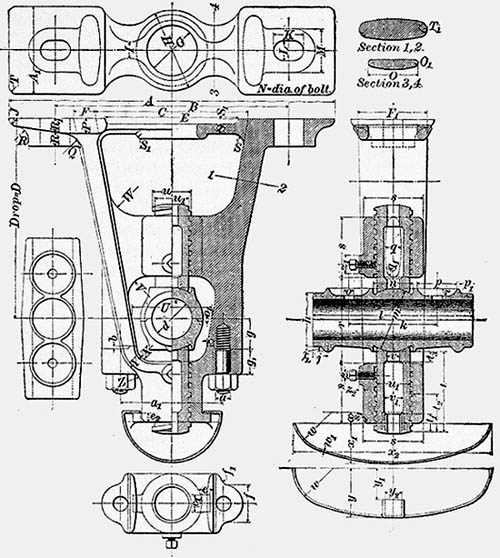Correspondence School
Today, we go to correspondence school. The University of Houston's College of Engineering presents this series about the machines that make our civilization run, and the people whose ingenuity created them.
Here's a 1900 handbook, Mechanics' Pocket Memoranda. It has the usual stuff in front -- trig functions, logarithms, conversion tables. But deeper into the book we find a set of mini-engineering textbooks with wonderful drawings. The whole book is only 3-1/2 by 5 inches. It really does fit in my pocket.
 Then I notice: it was published by the International Correspondence Schools -- better known as ICS. That got my attention. In 1946, I was doing badly in high school when a successful land surveyor took me under his wing and lent me his old ICS course on drafting. I started doing drawings and handing them in to him.
Then I notice: it was published by the International Correspondence Schools -- better known as ICS. That got my attention. In 1946, I was doing badly in high school when a successful land surveyor took me under his wing and lent me his old ICS course on drafting. I started doing drawings and handing them in to him.
And a world opened up. No instructor was talking at me -- obstructing my view of the subject. I was on my own, and education made sense. This old book brings back the sunburst of light I felt back then -- freedom to learn as rapidly as I was capable of learning. And, of course, that special beauty of machine drawings.
One website about distance learning begins its timeline with Paul's Epistles to the Church -- we've been trying to teach one another with written messages for millennia. But America began an intense concentration on mail-order schooling near the end of the nineteenth century. Anna Ticknor, daughter of a Harvard professor, founded of the movement in 1873. She created the Society to Encourage Studies at Home. She ran it 'til she died 24 years later.
Right on her heels a number of large universities -- as well as the Chautauqua movement -- took up the idea. The University of California was a latecomer in 1910, but it soon had the largest academic correspondence program in the country.
The International Correspondence School was another matter. It began in 1890 as a home study course offered by the Pennsylvania Colliery Engineer School of Mines. Its Scranton headquarters was a four-story medieval castle complete with turrets. By 1900, its huge in-house printing press was producing four tons of course notes each week. ICS could already boast a quarter-million students.
A picture in the end of my handbook shows a workman studying in his cramped boardinghouse room. And I know this is no advertising gimmick. I lived in all too many of those rooms, long ago. I know why he's focused so intently upon his notes.
Now we speak of distance learning, delivered by Internet, not by the postman. Its form is still evolving. Maybe it can become what the old correspondence course once was. Here's another old book, a manual on how to write correspondence courses.
It says: "Questions should require the student to think, not simply recollect or repeat." Then it offers an example of a good question, "Why is a kick delivered to a dog a stimulus and one delivered to a football not a stimulus?" Well, while you mull that one, I'm going back to look at pictures in this old ICS handbook. I want to relive the kick they once delivered to me.
I'm John Lienhard, at the University of Houston, where we're interested in the way inventive minds work.
Mechanics' Pocket Memoranda: A Convenient Pocketbook. 6th ed. (Scranton, PA: The Colliery Engineer Company, 1900).
G. R. Potter, Planning and Writing Correspondence Courses. (Berkeley, CA: University of California Press, 1946).
O. MacKenzie, E. L. Christensen, and P. H. Rigby, Correspondence Instruc-tion in the United States. (New York: McGraw-Hill Book Co., 1968).
I am most grateful to Nancy Day, Linda Hall Library, Kansas City, for providing the Mechanics' Pocket Memoranda source. All images are from this handbook.


